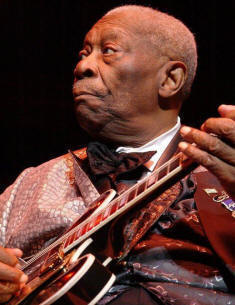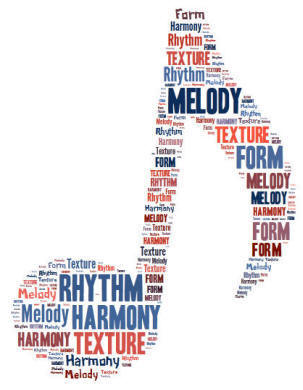| Traditional Analysis

There is a difference between analysis and description. To label a I chord is description - to evaluate the function of a harmonic phrase is analysis or to determine how the composer uses a particular chord in a particular way. Ever listen to BB King? Notice how he returns to a tonic chord
(and sings the tonic note between phrases) more often than other blues
artists. Description is assigning a "I chord" each time BB goes to tonic. Analysis is noting that he does it more often than other performers in his genre. Description is important to get to the analysis. Analysis really tells you where the music is coming from and what makes that particular piece or composer unique. Sometimes we have to do a lot of describing to figure out what is noteworthy. Drawing out the noteworthy items is the goal of analysis. But first . . . the descriptive and a review of those things to describe | Here are some of the Biggies to describe: Rhythm, Melody, Harmony, Texture, Form These are not the only things, but are primary categories |  | 
| | RHYTHM |
MELODYScale on which the melody is built (major, minor, modes, other scales) Non-harmonic tones (see table below) Phrasing Sequential melodic material Melodic motives
| Note: Non-harmonic tones, non-chord tones, decorative pitches are synonymous terms. When analyzing non-harmonic tones, circle them and use the abbreviations to identify Classification of Non-Chord Tones | Non-Chord
Tone Name | Abbreviated | Approached
by | Resolves by | Type | Passing Tone (unaccented) | PT | Step | Step in same direction | Unaccented | Passing Tone (accented) | > PT | Step | Step in same direction | Accented | Neighboring Tone (unaccented) | NT | Step | Step in opposite direction | Unaccented | Neighboring Tone (accented) | > NT | Step | Step in opposite direction | Accented | Neighbor group or Changing Tones | CT | Step | (two notes: one above and one below chord tone) resolves by step in the opposite direction | Unaccented | Appoggiatura | App | Leap | Step | Accented | Escape Tone | ET | Step | Leap in opposite direction | Unaccented | Suspension | Sus | Same tone | Step down | Accented | Retardation | Ret | Same tone | Step up | Accented | Anticipation | Ant | Step or Leap | Same tone as following note | Unaccented | Pedal Point | Ped | (none) | (suspension of the same tone throughout) | Both |
| HARMONYRoman numeral and figured bass analysis to show harmonic progression, chord quality, and inversions Identification of cadences
| | TEXTURE Texture includes the number of voices in the piece, the configuration of the voices, and how they interact. Monophonic - single melody with no accompaniment Homophonic - melody with accompaniment Polyphonic - multiple independent voices Homorhythmic - multiple voices with similar rhythmic material in all voices (like a hymn) Heterophonic - two or more voices simultaneously performing variations of the same melody
| FORM To describe form in music, you are simply observing repetition, contrast, and variation. It is common to use letters to designate sections. Here are some typical forms: Binary - two contrasting sections (AB) Ternary - three sections (ABA) Rounded binary - three sections, the A section returns, but in a shorter form (ABa) Rondo - between each section, the A section returns (ABACABA or ABACA, there are multiple possibilities) Strophic - using the same melody for each verse (AAAA) 
The form of a typical popular song might be Verse 1 (A), Refrain (B), Verse 2 (A'), Refrain (B), Bridge (C), Refrain (B) The A' indicates that it is not exactly the same, but uses the same material. Often, only the words are different, but the instrumental accompaniment may also be slightly different.
There are, of course, more complicated forms, such as Sonata Allegro form. However, even the more complicated forms are still based upon repetition, contrast, and variation. Continue your review of form at this link. | | BEYOND THE BIGGIES There are certainly other considerations in traditional analysis. Don't forget - articulation
- dynamics
- timbre
Look them up if you don't remember the details! 

Created and maintained by Vicky V. Johnson |
|